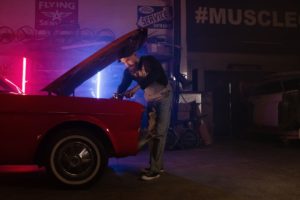Restoring a classic car can be a rewarding and challenging project, but it’s not something to be taken lightly. It requires time, money, and expertise to bring a vintage vehicle back to its former glory. Without the expertise, you’ll spend too much time and money. If you’re considering restoring a classic car, here’s a step-by-step guide to help you get started.
- Assess the condition of the car. Before you begin any restoration work, it’s important to assess the overall condition of the car. This will help you determine the scope of the project and give you a sense of what needs to be done. Look for rust, damage, and wear and tear on the body, chassis, and mechanical components. Take detailed notes and photos so you can refer back to them later.
- Create a plan. Once you have a good understanding of the car’s condition, it’s time to create a plan. This should include a list of the work that needs to be done, an estimated budget, and a timeline for completion. It’s also a good idea to prioritize tasks and focus on the most important or urgent items first.
- Gather resources. Restoring a classic car can be a complex process, so it’s important to have the right resources at your disposal. This may include tools, equipment, and specialized parts. You may also need to hire a mechanic or shop to assist with the restoration work. Research your options and make sure you have the resources you need before you start the project.
- Begin the restoration work. Once you have your plan and resources in place, you can start the restoration work. This may involve disassembling the car, repairing or replacing damaged parts, and refinishing the body and paint. Follow your plan and stay organized as you work, and don’t be afraid to ask for help if you need it.
- Reassemble and test the car. Once the restoration work is complete, it’s time to reassemble the car and put it through its paces. This may involve installing the engine and other mechanical components, connecting the electrical system, and testing the car’s performance. Be sure to take your time and double-check your work to ensure everything is in good working order.
- Enjoy your classic car! After all the hard work and dedication you’ve put into restoring your classic car, it’s time to enjoy it! Whether you take it for a spin around town or show it off at a car show, the pride of ownership and the enjoyment of driving a piece of automotive history is worth all the effort.
I hope this helps! Contact me if you have any questions or need further guidance on restoring a classic car. My expertise and connections will help you significantly reduce the overall cost and time to complete your classic car restoration project.

